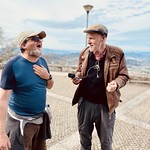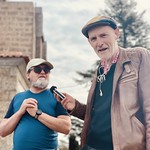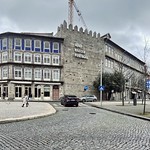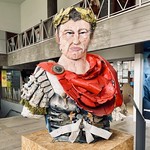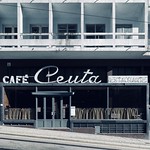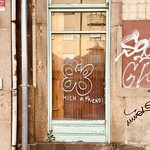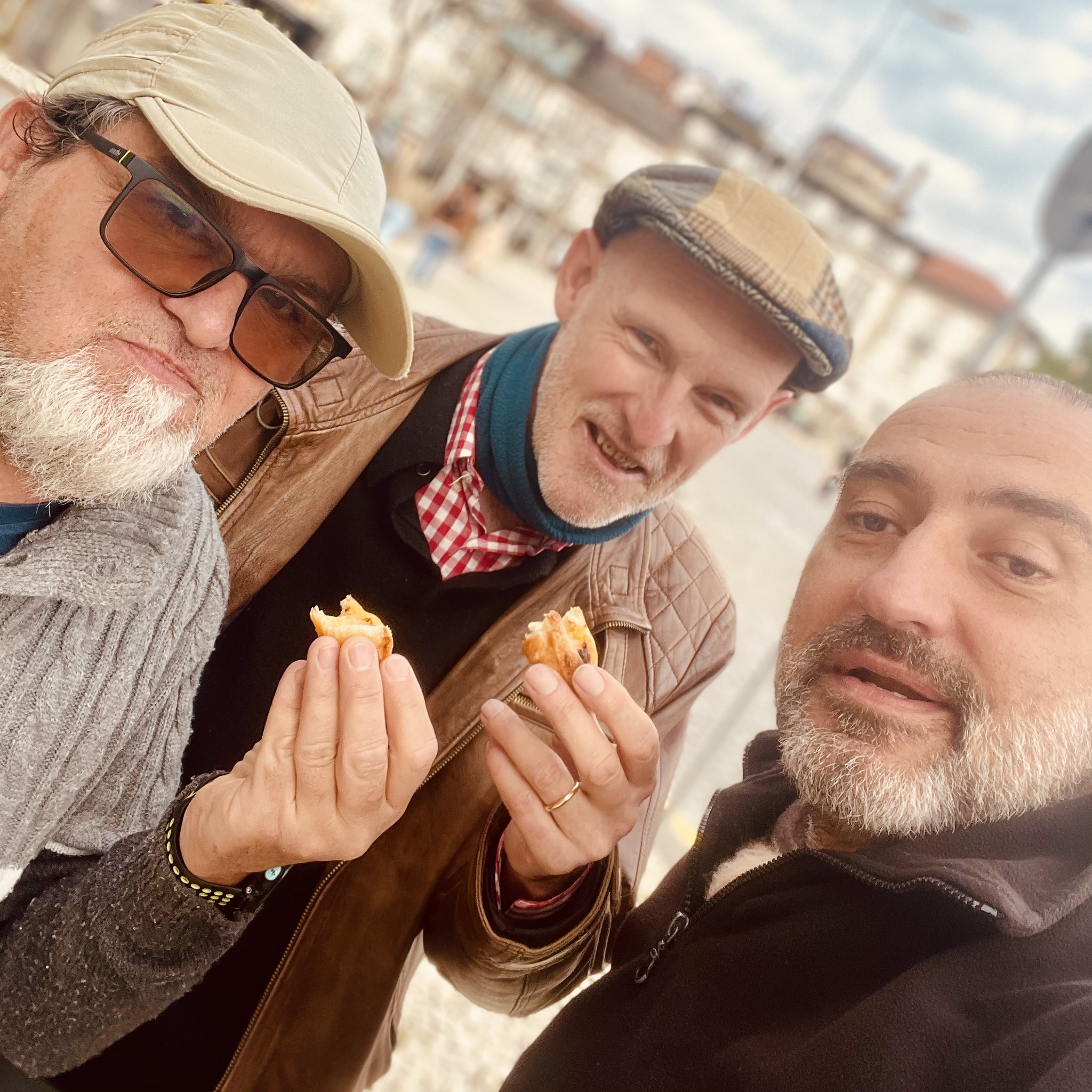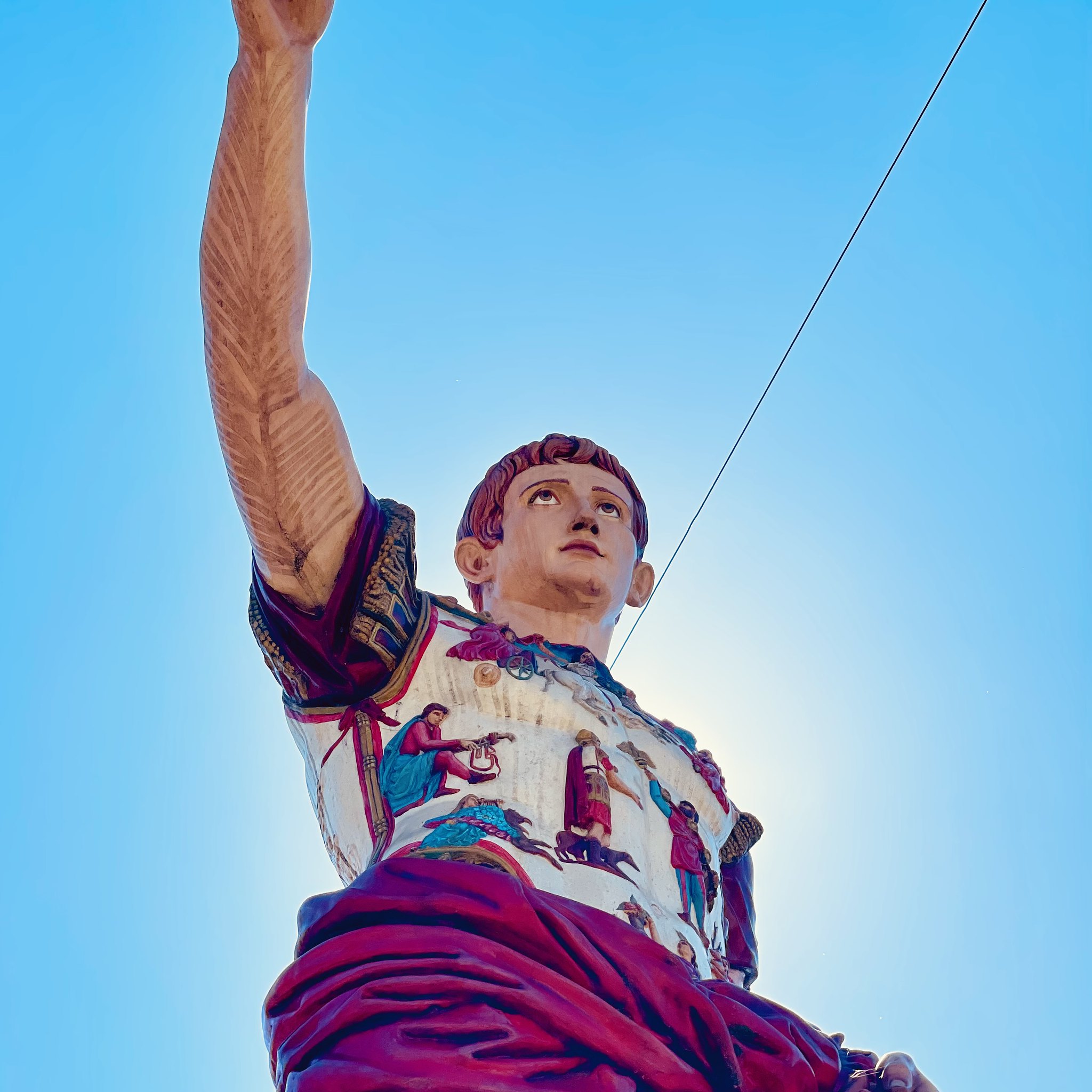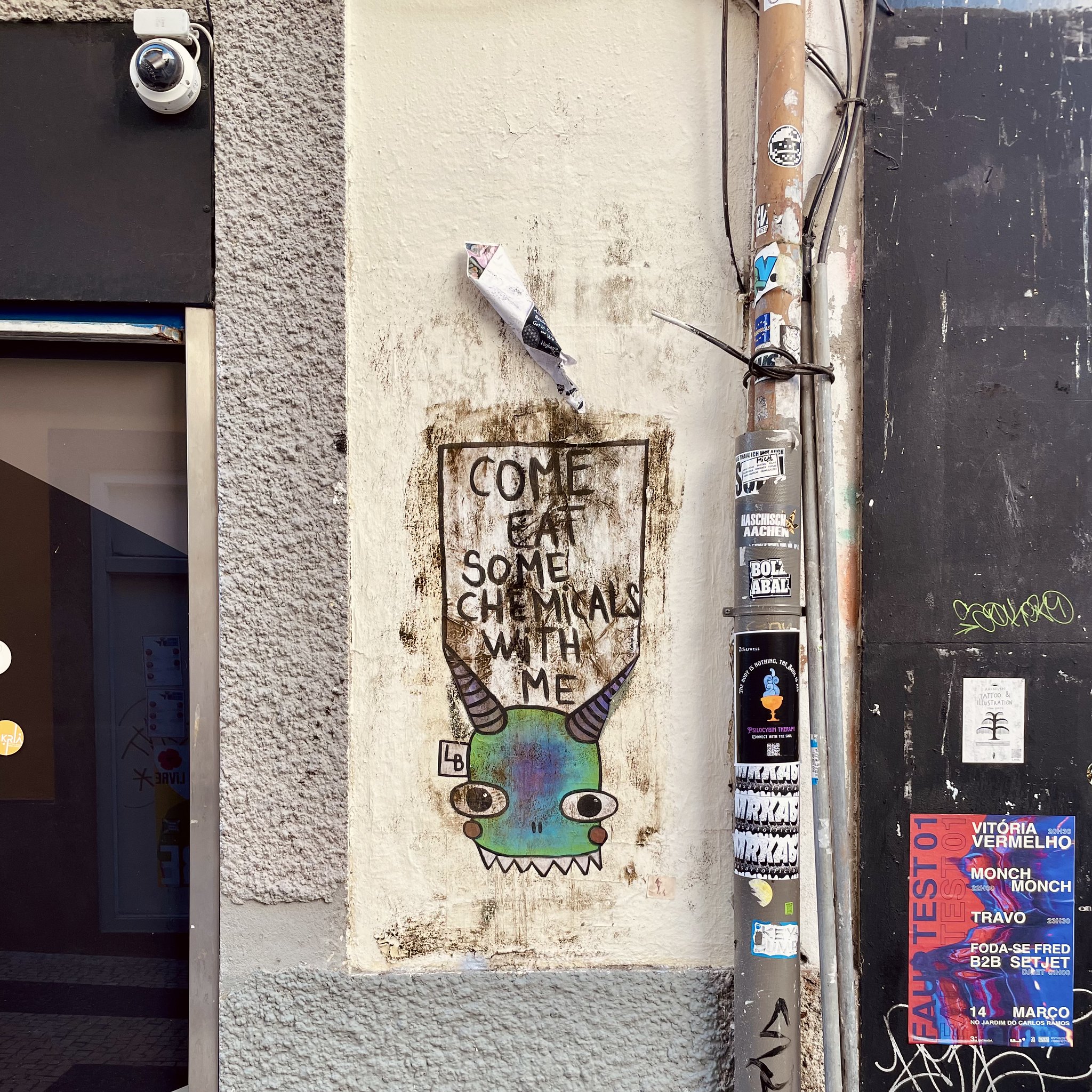Where Portugal was born
Though the NGO I’m (partially) responsible for, WLC, I’m participating in a four-year European project, partially funded by the EU. The project is called WALC, and it brings together seven European organisations, all involved in walking art. The project’s aim is to create a physical center for walking art in Prespes, northern Greece, with hubs in Belgium, France, Spain, and Portugal, backed up by an online platform, with the latter growing out of the WLC website.
We had an in-person kickoff meeting in the Portuguese town of Guimaraes, coinciding with the conference The Walking Body 5, hosted by Lap2PT, part of The University of Minho, a university in the north of Portugal.
The old town of Guimaraes is a World Heritage Site, and the city plays an important role in the history of Portugal. The town is often called the “birthplace of Portugal”, as it was here that Portugal’s first King, Afonso Henriques was born. In addition, the Battle of São Mamede, considered the seminal event for the foundation of the Kingdom of Portugal, which saw the army of a son (the future king) fighting the army of his mother, was fought in the vicinity of the city.
To underscore its position as a World Heritage Site, the town was declared the most beautiful small city, whatever that really means, in Europe by the Condé Nast Traveler magazine in 2022. And, the town is certainly cute, and very well preserved, though in many ways also quite comparable to many other towns in Portugal, and in the former Portuguese empire, growing in the wake of the country’s colonial conquests.
Taking the advantage to advance another project I’m working on, I planned this visit such that I would have a little bit of time in Porto, Braga, and Lisbon, as well as Guimaraes, resulting in a short whirlwind tour of Portugal.
Guimaraes might be where Portugal was born, the nearby town of Braga has roots that go back much further.
Braga was founded by Augustus, after defeating the local Celts, and, indeed, there’s still a somewhat tangible Celtic connection with the more famous Celtic regions of the north.
One leftover of that Augustine connection, is that the city hosts a copy of a statue of Augustus which was found in the house of Augustus’ third wife, in Rome. This copy is quite unique, in that it was restored to resemble the multi-color makeup of the original, and, for that matter, all statues of Ancient Rome.
Roman statues have come down to us with washed-out colors, practically all-white, but that is now how the ancient Romans put them on display.
Braga is also home to the basilica of Bom Jesus, sitting on top of a nearby hill, and historically has been a bit of a destination for pilgrims. Nearby, around the church, you can find little chapels, all closed, but with doors that allow you to peer in, through which you can see statues, scenes, depicting a number of events from the Bible.
The whole thing very much reminds me of the world heritage site in Congonhas, in Minas Gerais, down to the style of the statues surrounding the church.
In Porto, I encountered a cafe carrying a quote on its window, from Time Out magazine, stating they served the best croissant in the city. So, of course I had to have breakfast there.
To be horrendously disappointed.
Not only was the croissant very average, it was also sweet. Having this croissant with ham, cheese, and a fried egg, made me fear for all the other croissants in the city.




